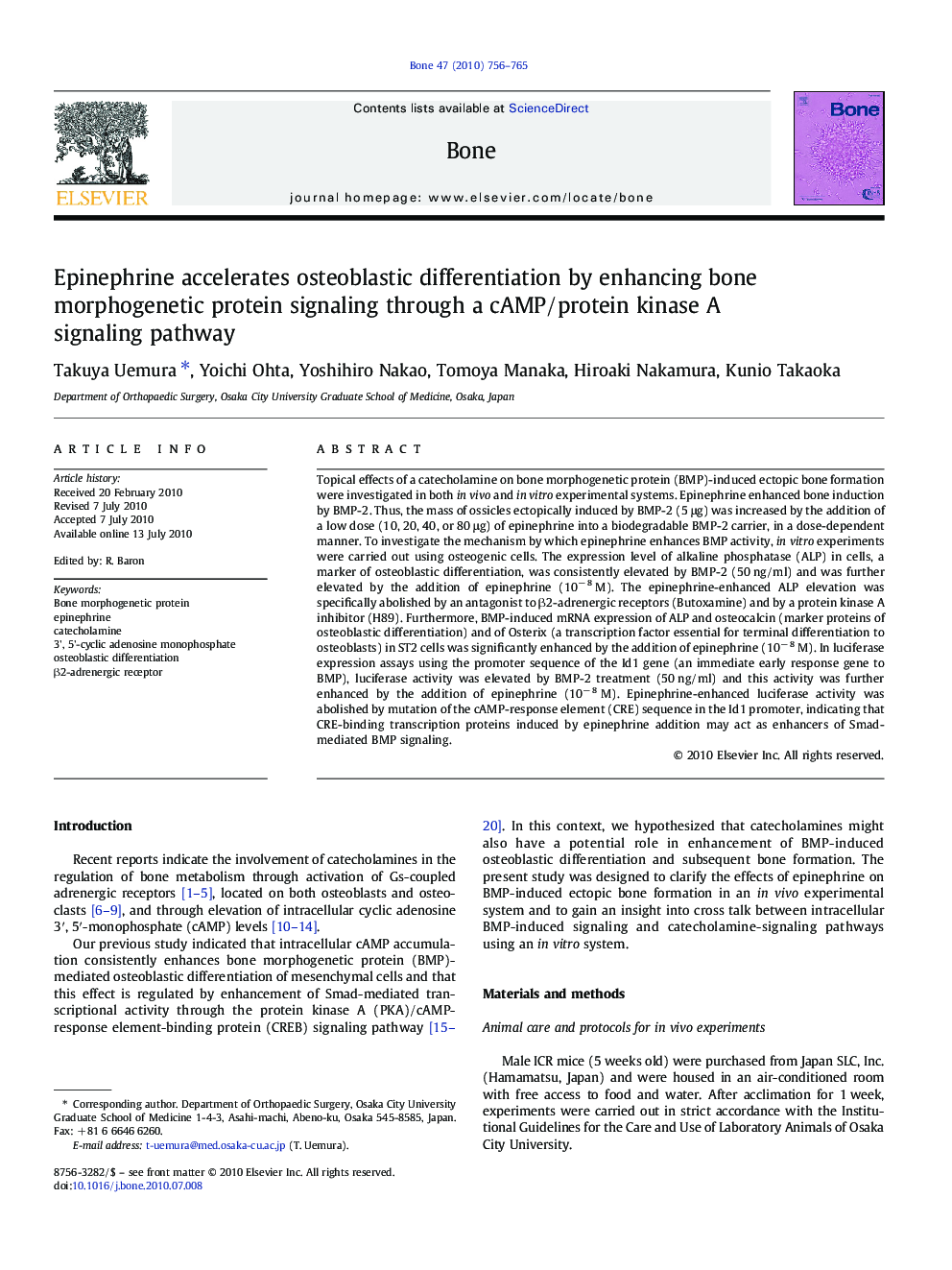| Article ID | Journal | Published Year | Pages | File Type |
|---|---|---|---|---|
| 2780146 | Bone | 2010 | 10 Pages |
Topical effects of a catecholamine on bone morphogenetic protein (BMP)-induced ectopic bone formation were investigated in both in vivo and in vitro experimental systems. Epinephrine enhanced bone induction by BMP-2. Thus, the mass of ossicles ectopically induced by BMP-2 (5 μg) was increased by the addition of a low dose (10, 20, 40, or 80 μg) of epinephrine into a biodegradable BMP-2 carrier, in a dose-dependent manner. To investigate the mechanism by which epinephrine enhances BMP activity, in vitro experiments were carried out using osteogenic cells. The expression level of alkaline phosphatase (ALP) in cells, a marker of osteoblastic differentiation, was consistently elevated by BMP-2 (50 ng/ml) and was further elevated by the addition of epinephrine (10− 8 M). The epinephrine-enhanced ALP elevation was specifically abolished by an antagonist to β2-adrenergic receptors (Butoxamine) and by a protein kinase A inhibitor (H89). Furthermore, BMP-induced mRNA expression of ALP and osteocalcin (marker proteins of osteoblastic differentiation) and of Osterix (a transcription factor essential for terminal differentiation to osteoblasts) in ST2 cells was significantly enhanced by the addition of epinephrine (10− 8 M). In luciferase expression assays using the promoter sequence of the Id1 gene (an immediate early response gene to BMP), luciferase activity was elevated by BMP-2 treatment (50 ng/ml) and this activity was further enhanced by the addition of epinephrine (10− 8 M). Epinephrine-enhanced luciferase activity was abolished by mutation of the cAMP-response element (CRE) sequence in the Id1 promoter, indicating that CRE-binding transcription proteins induced by epinephrine addition may act as enhancers of Smad-mediated BMP signaling.
